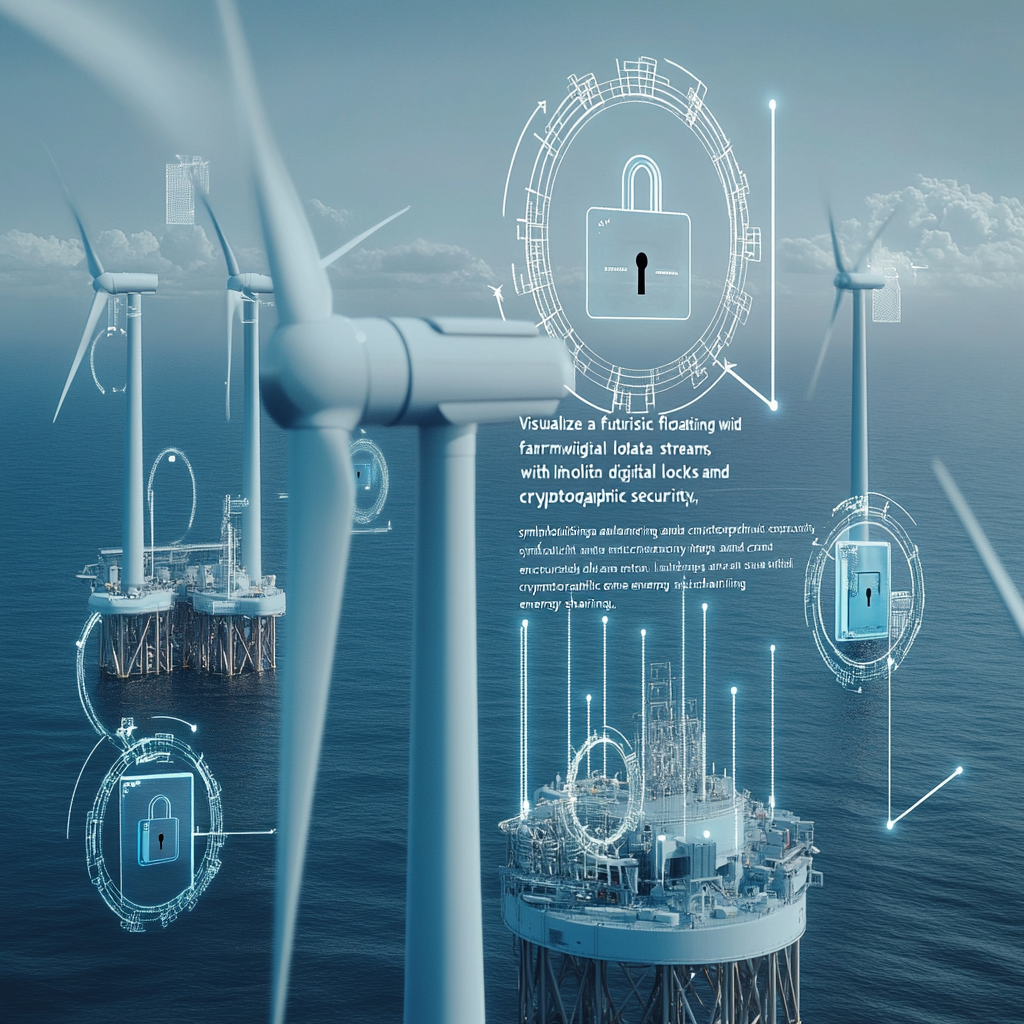
Blockchain Enhances Data Security in Offshore Wind Energy Collaboration
In the vast expanse of the renewable energy universe, floating wind energy is like that enigmatic star that never quite gets the attention it deserves, despite being on the brink of revolutionizing how we harness nature's power. Picture colossal turbines dancing gracefully atop the waves, converting wind into clean energy, yet they face a monumental issue: sharing data safely and securely among the multitude of players involved. Enter the new cryptographic protocol, the shining knight in digital armor, ready to tackle the modern-day battle of data-sharing dilemmas.
Why should we even care about secure data sharing? Well, let’s lay it down: as floating wind farms sprout up in our oceanic depths, the importance of communication among Original Equipment Manufacturers (OEMs), developers, regulators, and researchers increases exponentially. Without secure, effective data exchange, the whole operation could falter before it even gets started. We need to share everything from wind speed to sea conditions faster than a squirrel on espresso. Why? Because innovation isn’t just a good idea; it’s a survival skill in the cutthroat world of renewable energy sectors!
Imagine it like a jigsaw puzzle, where each stakeholder holds a piece. Releasing data such as wind speed, direction, and atmospheric turbulence does wonders for optimizing turbine efficiency and slashing maintenance costs. But alas, lurking in the shadows are elephants in the room: issues of intellectual property theft and data privacy make many think twice before sharing their secrets.
This is where the innovative minds of Claudia Bartoli from IMDEA Software Institute and Irene Rivera-Arreba from the Norwegian University of Science and Technology (NTNU) stepped in like superheroes at the WindTech 2024 Conference. They've birthed a cryptographic protocol that doesn’t just promise enhanced security; it all but guarantees it. Their brainchild ensures that even while sharing vital data, no one’s privacy or intellectual treasures get plundered. How cool is that?
Let me serve you the juicy bits of this protocol. First off, we have Zero-Knowledge Proofs, a fancy term that basically means someone can verify that they have the necessary data without actually revealing the data itself. It’s like knowing someone has the secret recipe for your favorite cake but not having to hand it over. Tangible proof without compromising confidentiality—now that's a double whammy!
Next up is Multi-Party Computation (MPC)—the group project no one dreads. Imagine a scenario where multiple parties work together on the same data set without unveiling their individual secrets. Parties can analyze the data collaboratively while keeping their precious inputs a tight-lipped secret. If that’s not the definition of teamwork, I don’t know what is!
Oh, and let’s not forget about cryptographic signatures and commitment schemes, the sturdy armor that promises to keep data permeability costs low and management of monster-sized databases efficient. This trio of techniques ensures that voluminous amounts of data can be breached only by those who have a legitimate passcode.
Now, let’s get into the meat and potatoes: what does this mean for the world? The ripple effects are set to be nothing short of transformational. First on the list is enhanced collaboration. With a fortress of secure data sharing, stakeholders can finally relax and trust each other, leading to groundbreaking innovation in floating wind technologies. We’re talking about collaboration between scientists, engineers, and industries that can crank the dial on floating wind energy up a notch.
Then comes the efficiency boost—who doesn’t want their energy output to soar while costs dive? With shared insights into everything from turbine design to predictive maintenance, we could see reductions in operational expenses of up to 10%. Imagine the savings that could be funneled back into further refining these technologies. It turns out that sharing really is caring.
But there’s more! With this new protocol laying down the law, the development processes for floating wind farms can experience turbocharged acceleration. The International Energy Agency (IEA) has set the bar with a target of ramping up offshore wind capacity from a modest 75 GW to a staggering 350 GW by 2030. It sounds ambitious, but with the right framework in place, it's not just a dream—it's an achievable reality!
Now, let’s toss a spotlight on the existing frameworks that already care about data-sharing, like the UK’s SPARTA initiative or the US's WinNER network. These initiatives already collect and process operational data to foster innovation, but they are akin to sprightly runners who need to scale their efforts and go global. In this digital age, waiting for a miracle isn’t an option. We must weave these networks together globally like a knitting club gone wild.
Companies like Akselos are also in the mix, crafting digital twin technologies that allow users to access relevant data while streamlining load analysis on their turbines. Talk about innovation! This trifecta of secure sharing, collaboration, and technological advances is primed to reduce the Levelized Cost of Energy (LCOE) while revealing a treasure trove of optimization possibilities.
Nevertheless, in this brave new world of constant data exchange, cybersecurity looms large on the horizon. Merely having secure data-sharing practices isn’t enough; we need to safeguard these digitized fortresses against potential breaches. Researchers at the National Renewable Energy Laboratory (NREL) are already a step ahead, diligently fortifying the wind industry’s defenses against cyber threats through R&D partnerships and specialized programs. Through initiatives like the Renewable Energy and Storage Cybersecurity Consortium (RESCue) and the Wind Security, Health, Integrity, Engineering, and Learning (WindSHIELD) program, they’re doing an excellent job in the digital trenches.
In the blink of an eye, we see how Bartoli and Rivera-Arreba’s cryptographic protocol offers a beacon of promise for the floating wind energy sector. Their work ensures that data privacy and accessibility dance together rather than clash like unsynchronized swimmers. As we stride towards a sustainable future, we must rally behind innovative solutions that break down silos, nurture collaboration, and most importantly, empower clean, renewable energy.
This isn’t just dreaming; it’s about fueling a revolution that ignites change, innovation, and cleaner skies above us. So, if you find this dance of data-sharing in floating wind energy as captivating as I do, don’t forget to stay in the loop!
Want to stay up to date with the latest news on neural networks and automation? Subscribe to our Telegram channel: @channel_neirotoken
Join the chorus of those who believe innovation is the path to a sustainable, cleaner world! The wind is at our backs—let’s sail forward together!
